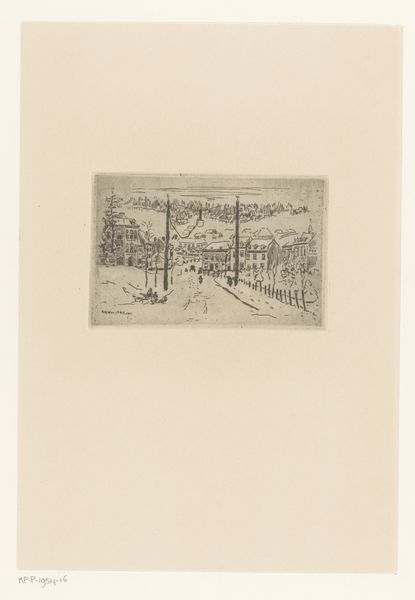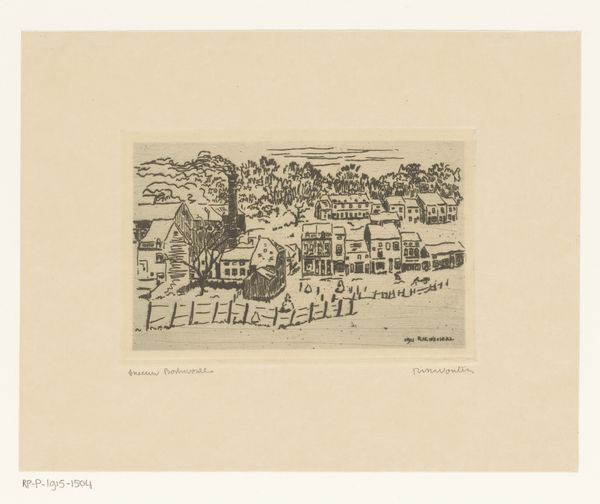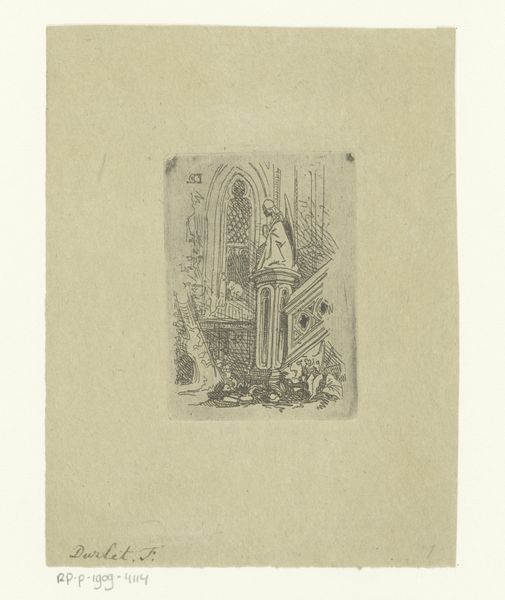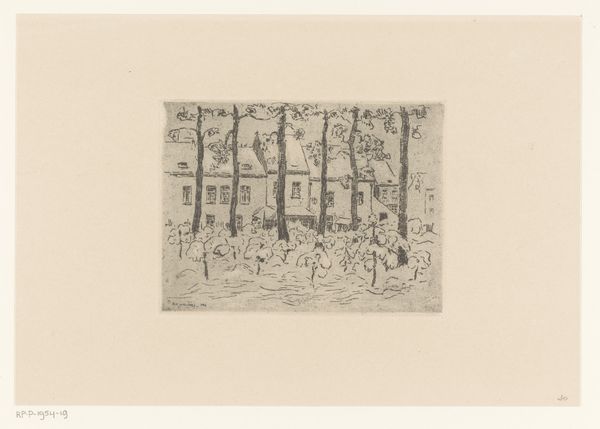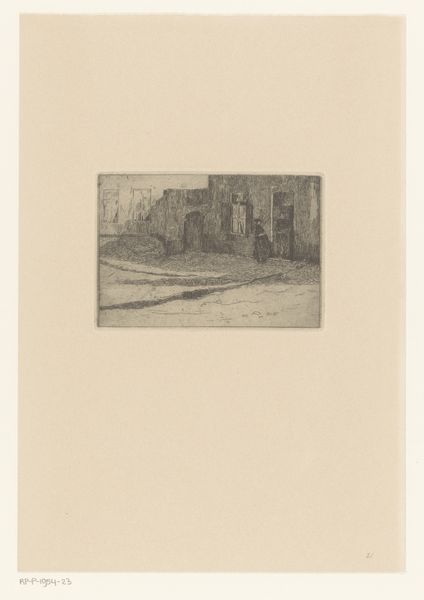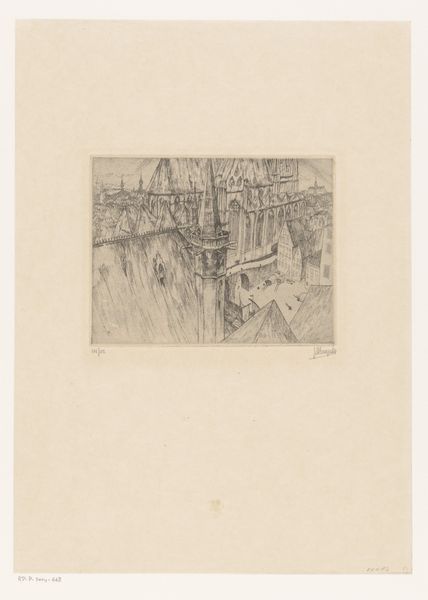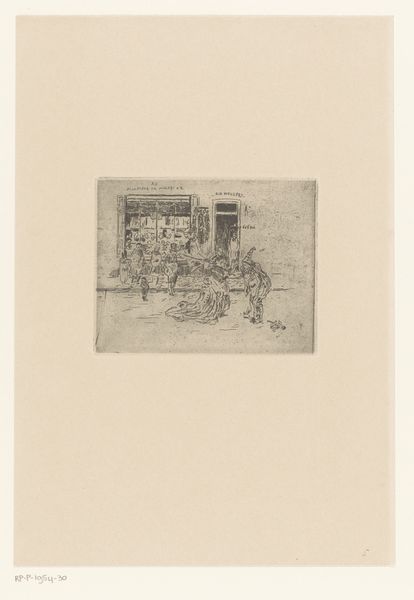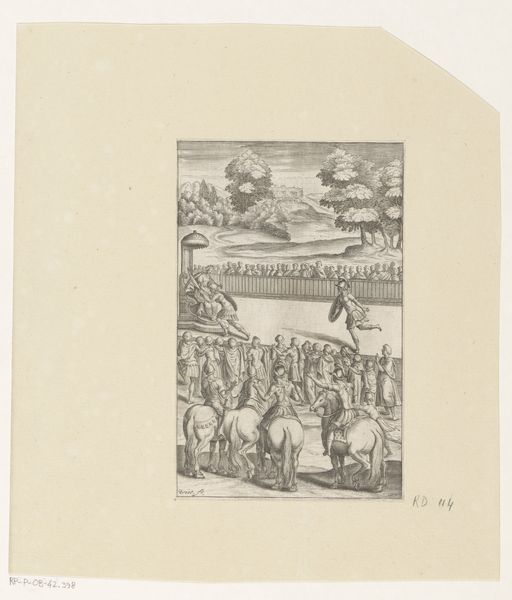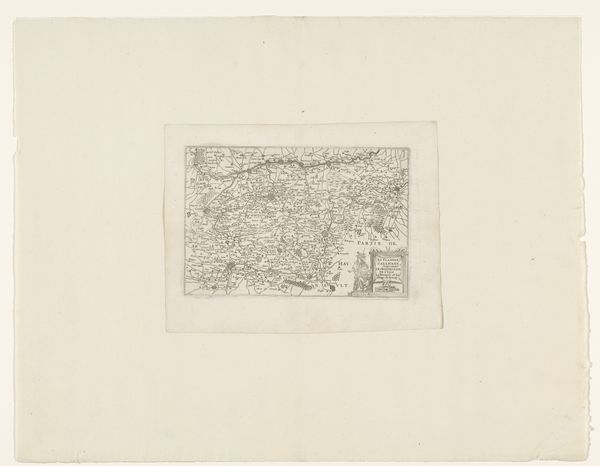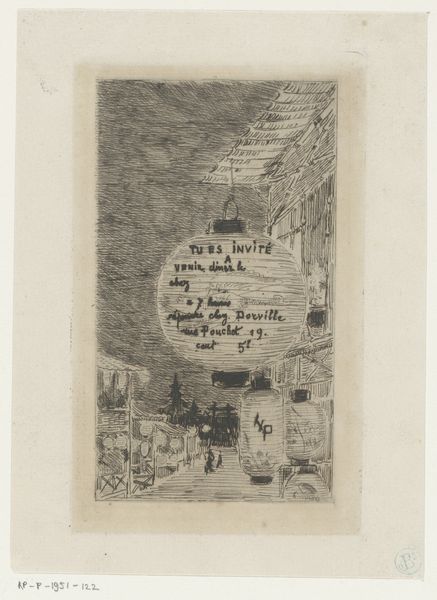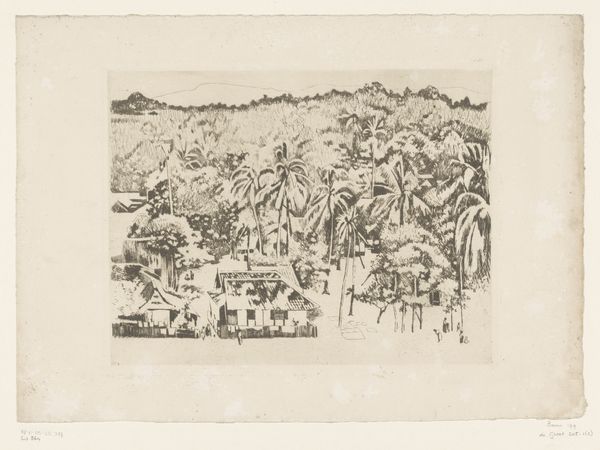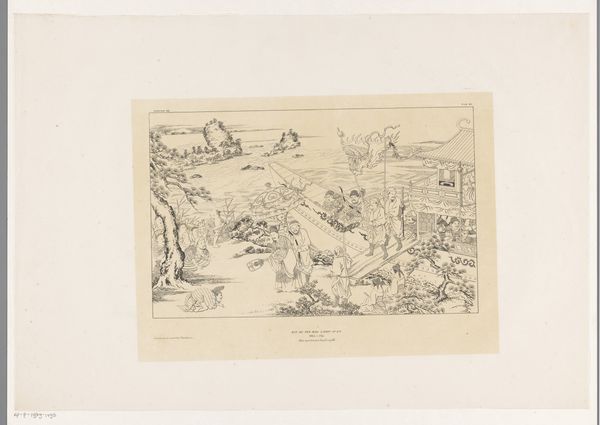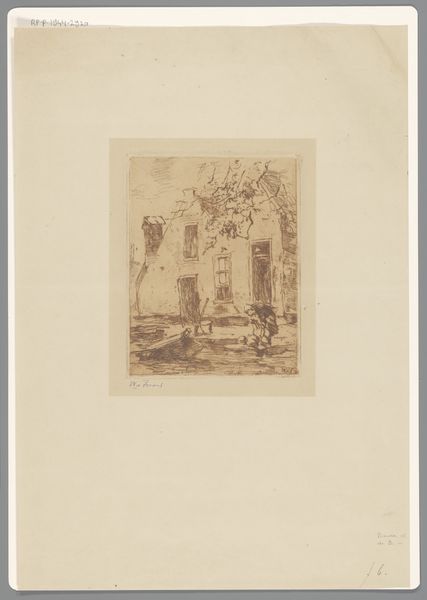
print, etching
#
aged paper
#
art-nouveau
# print
#
etching
#
landscape
#
genre-painting
Dimensions: height 172 mm, width 142 mm
Copyright: Rijks Museum: Open Domain
Curator: Here we have Rik Wouters’ "Kermis te Vilvoorde" from 1911, a small but compelling etching depicting a fairground scene. Editor: Oh, what a delightfully frenetic little world! It feels almost like a sketch lifted from a dream. There’s such a palpable sense of joy emanating from this compressed space. Curator: It's interesting how he captured so much dynamism in such a fine-lined, almost minimalist approach. As an etching, the process involves using acid to bite into a metal plate, allowing for incredibly detailed lines that create light and shadow. I see it as quite innovative and an early example of how etching could communicate ideas of class and culture for a broader population, not just wealthy patrons. Editor: Right, looking closely at the etching itself, the density of lines really communicates the feeling of a teeming crowd. You can almost hear the cacophony of carnival sounds despite its silence. What interests me about the materiality, however, is the direct engagement of Wouters' hand, the almost intimate interaction with the metal plate. Curator: Yes! And, of course, "kermis" – that’s the Dutch word for a fair or carnival. These events were vital parts of community life in Belgium and other parts of Europe, offering a release from everyday life. I imagine the brassy music and sticky sweets! Do you feel transported, even if this work seems so simple? Editor: Definitely, but I think about the actual labor that goes into entertainment, too. Beyond the pretty scene, consider the labor needed for tents, food stalls, transportation… elements perhaps glossed over to support that initial rush of delight and diversion. Curator: That tension you bring up – labor versus joy – it resonates. Perhaps Wouters himself, moving from paint to etching and printing, explored new methods and reached new viewers outside the studio in his time. Editor: Exactly. He's pushing boundaries and reflecting that back in the very scene he’s chosen to portray! Well, thanks, that shifted my view! Curator: Absolutely, to view art through labour – an illuminating moment to ponder the work itself, and its creator, as something of this carnival too.
Comments
No comments
Be the first to comment and join the conversation on the ultimate creative platform.
